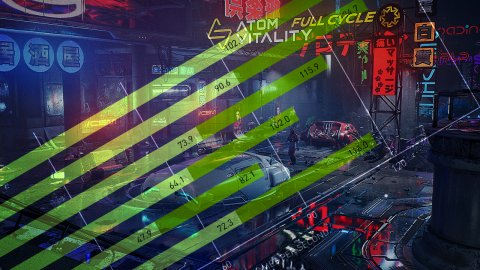Nvidia DLSS: the advantages in gaming and new compatible games

Nvidia DLSS
A few hours after the official release of AMD's Super Resolution, certainly the most awaited feature of the FidelityFX package, Nvidia is back to talk about its innovative DLSS technology. The giant of the semiconductor industry wanted to underline for the umpteenth time how Deep Learning Super Sampling has been designed to significantly increase performance in games, without sacrificing graphic detail.During the conference they were also announced several titles that will support this technology soon, thanks to several game engines already compatible with DLSS. So let's find out why DLSS is so important and what awaits us in its promising future, just as AMD has finally launched its competing technology for the PC and console market.
In this special we recap the advantages in gaming and new games compatible with Nvidia DLSS.
How does DLSS work?
DOOM Eternal will soon support NVIDIA's DLSS NVIDIA during the conference wanted to specify once again the operation of the its DLSS technology. Basically the DLSS takes care of producing a high resolution image starting from a lower resolution sample. For example, it is used in video games to reach 4K resolution starting from 1080p, without any perceptible loss of quality. To do this, the Tensor Cores present in the GeForce RTX series GPUs and a complex algorithm based on artificial intelligence are required.Generating a 4K image frame by frame starting from 1080p, the algorithm must be able to predict 6.2 million additional pixels. This is not an easy task, especially given the speed with which it has to be done. DLSS uses four different inputs in real time to generate 4K output:
The image rendered by the game engine in 1080p The motion vectors of the 1080p image, created by the game engine The previous frame rendered in 4K by the DLSS A huge database of 16K images taken from different elements of numerous games to train artificial intelligence
How NVIDIA's DLSS works Using motion vectors, artificial intelligence is able to predict the movement of objects from one frame to another. Taking into account the previous frame rendered in 4K and the motion vectors generated by the game engine, the algorithm looks to the past to predict the future, thus managing to reduce flickering and other unsightly graphic artifacts.
Tracing every single pixel in this way and by taking multiple samples for every pixel in various frames, the DLSS is able to generate a superior image quality compared to traditional upscaling solutions. Added to this is the training of artificial intelligence carried out through the database of 16K images, which help the algorithm to generate higher resolution frames in real time.
NVIDIA DLSS vs Upscaling e Sharpening
Upscaling and Sharpening compared to DLSS AMD with its FidelityFX Super Resolution technology aims to use an algorithm based on Upscaling and Sharpening to achieve a result similar to DLSS. AMD wants to bring the technology to all developers in a simple and immediate way, even making it open source. NVIDIA, however, underlined that DLSS has significant advantages over Upscaling and Sharpening.To highlight these differences, NVIDIA wanted to compare the result obtained by DLSS and that generated by the NVIDIA Image Sharpening technology (available inside the GPU control panel). NVIDIA's Image Sharpening actually manages to generate a better image than the classic upscaling done by the monitor or the game itself. However, as you can see from the image at the beginning of the paragraph, DLSS remains considerably better in this respect, because it is based on a complex artificial intelligence algorithm.
While Image Sharpening uses only the current frame to approximate the pixels missing, the DLSS has other sources to generate a more detailed frame in real time (as we have already explained in the previous paragraph). The final result offered by the Image Sharpening therefore presents more artifacts, heavier the load on the GPU and decreases the frames per second generated.
New games with DLSS
New games with DLSS support by NVIDIA During the conference NVIDIA then underlined how DLSS is currently supported by 55 latest generation titles. However, other video games will soon adopt this technology to improve their performance and visual rendering with NVIDIA's GeForce RTX graphics cards. The latest video games to embrace DLSS technology were: The Persistence: Enhanced, No Man's Sky, Chernobylite's Exclusion Zone, Necromunda: Hired Gun, Tom Clancy's Rainbow Six Siege, Call Of Duty Warzone. Also in the coming weeks the DLSS will arrive for the following games:LEGO Builder's Journey from June 22 DOOM Eternal from June 29, 2021 Rust from July 1, 2021 Red Dead Redemption 2 with date yet to be confirmed
DLSS in continuous evolution
Gaming engines with DLSS support from NVIDIA In addition to all the advantages already mentioned, DLSS can count on artificial intelligence and constantly evolving machine learning algorithms. Month after month these algorithms have been designed to be able to improve themselves, providing increasingly advanced results. We therefore expect a constant progression of this technology, available for free for all owners of NVIDIA GeForce RTX cards.Finally, DLSS is currently supported by various game engines such as: Frostbite, Cryengine, id Tech, Rage , Render Dragon Decima, Luminous, Foundation Engine, IW Engine, RED Engine, 4A Games. DLSS support is also present in the popular Unreal Engine 4 and 5, while compatibility with Unity 2021.2 will also arrive later this year. Finally NVIDIA, during its conference, also wanted to mention the arrival of DLSS on Linux operating systems with an update available from June 22.
Have you noticed any errors?